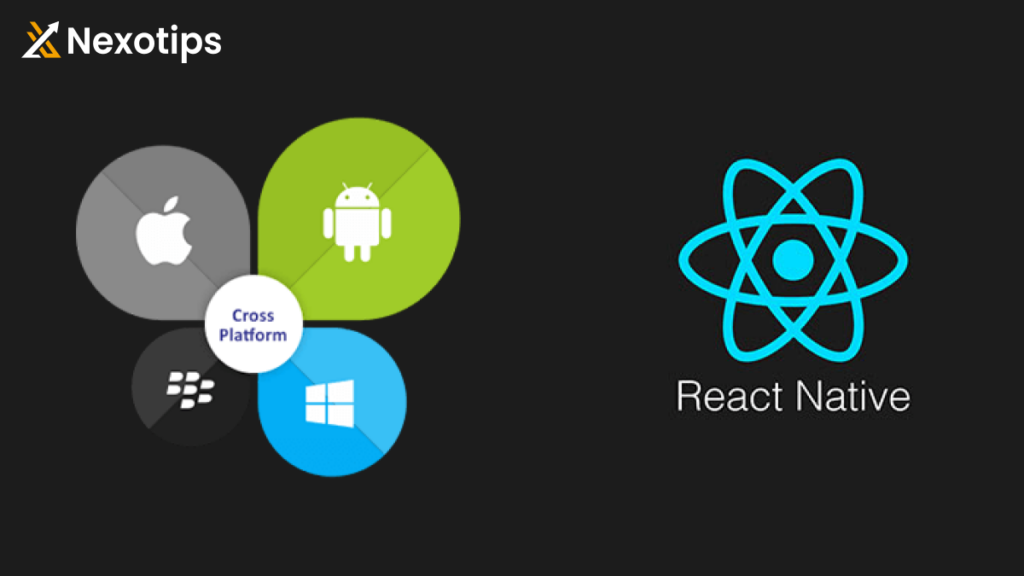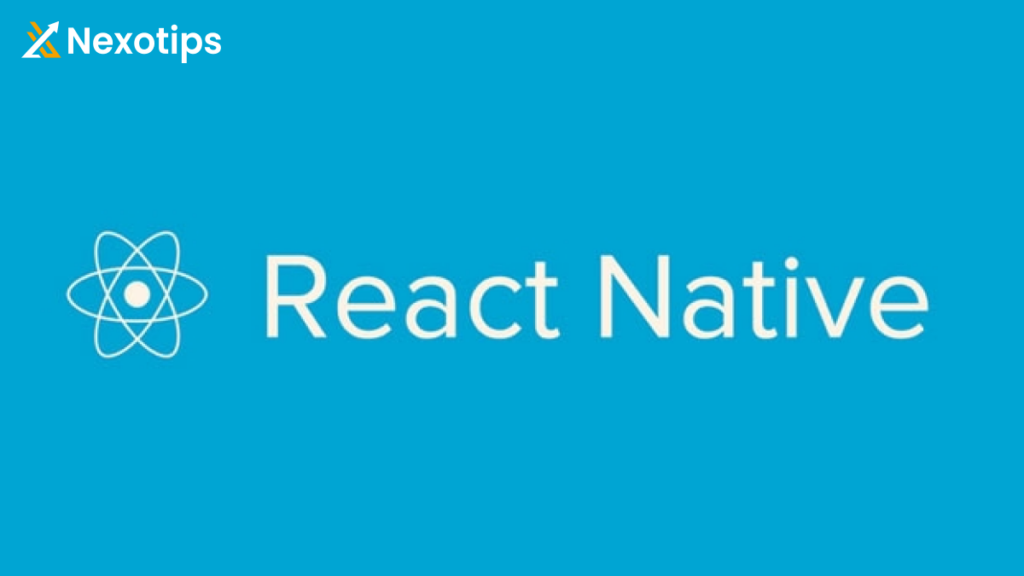
Potential of React Native Framework: A Deep Dive into the World’s Most Popular Apps
React Native Framework
In the dynamic world of mobile app development, the framework you choose can greatly influence the outcome and growth of your project. React Native, a framework created by Facebook, has become a game-changer, enabling developers to build robust, cross-platform mobile apps using well-known tools such as JavaScript and React. By combining the speed of web development with the power of native apps, React has become the top choice for both developers and businesses.
With React Native, developers can write code once and deploy it across multiple platforms, saving time and resources. This framework also allows for hot reloading, which means developers can see changes in real-time without having to recompile the entire app. This not only speeds up the development process but also makes it easier to test and iterate on features.
Furthermore, React has a large and active community of developers who contribute to its growth and improvement. This means that developers have access to a wealth of resources, tutorials, and libraries to help them build their apps more efficiently.
For businesses, React offers a cost-effective solution for building mobile apps that can reach a wider audience. By leveraging the power of JavaScript and React, businesses can create high-quality apps that provide a seamless user experience across different devices and operating systems.
Overall, React has revolutionized the mobile app development industry by providing a flexible and efficient framework that empowers developers to create cutting-edge apps. Whether you are a developer looking to streamline your workflow or a business looking to expand your mobile presence, React is a framework worth considering for your next project.
In this extensive exploration, we’ll unravel the intricacies of React framework and dissect some of the most influential and widely-used applications that have harnessed its capabilities. From social media juggernauts to e-commerce giants, React has left an indelible mark across diverse sectors, revolutionizing the way mobile apps are conceptualized, developed, and deployed.

Understanding the Foundations of React Native Framework:
To fully understand the landscape of popular React apps, it is crucial to first comprehend the fundamental principles that form the foundation of this framework’s attractiveness and functionality. React Native, at its essence, harnesses the capabilities of React, a JavaScript library designed for constructing user interfaces. This enables the development of mobile applications that showcase performance and behavior similar to native apps. With the utilization of a single codebase, developers can efficiently target various platforms such as iOS and Android, reducing duplication and maximizing code reuse.
Furthermore, React utilizes a declarative programming model, where developers describe what the user interface should look like based on the current state of the application. This allows for easier debugging and maintenance, as changes to the UI can be made by simply updating the state, rather than directly manipulating the DOM.
One of the key advantages of React is its ability to provide a native-like experience to users. By leveraging native components, React apps can take advantage of the device’s capabilities, such as accessing the camera or GPS, providing a seamless and immersive user experience. This is achieved through the use of bridges, which enable communication between the JavaScript code and the native code.
Another important aspect of React is its strong and active community. With a large number of developers contributing to the framework, there is a wealth of resources, libraries, and tools available to aid in the development process. This community-driven approach ensures that React stays up-to-date with the latest trends and technologies, making it a reliable choice for building mobile applications.
In addition, React offers hot reloading, which allows developers to see the changes they make in real-time, without the need to rebuild the entire application. This significantly speeds up the development process and enables developers to iterate quickly, resulting in faster development cycles and more efficient workflows.
Furthermore, React Native provides a smooth transition for web developers looking to venture into mobile app development. Since React Native uses JavaScript, developers with experience in web development can easily transfer their skills and knowledge to build mobile applications. This reduces the learning curve and allows for a faster adoption of the framework.
Overall, the combination of its foundation on React, the ability to target multiple platforms, the native-like experience it provides, the strong community support, and its developer-friendly features make React Native a popular choice for building mobile applications. By understanding these fundamental principles, one can gain a deeper appreciation for the landscape of popular React Native apps and the reasons behind their success.
Key Features and Advantages of React Native:
- Cross-Platform Compatibility: React Native facilitates the development of cross-platform applications, allowing developers to write code once and deploy it across multiple platforms without sacrificing performance or user experience. This inherent flexibility streamlines the development process and reduces time-to-market for new products and features.
- Hot Reloading: One of React Native’s standout features is hot reloading, which enables developers to see the impact of code changes in real-time without the need for manual reloading or recompilation. This feature enhances productivity, accelerates iteration cycles, and fosters a more responsive and dynamic development environment.
- Access to Native Components: React Native provides developers with access to native components and APIs, enabling seamless integration with device-specific features and functionalities. By leveraging native capabilities, developers can deliver a more immersive and tailored user experience, thereby enhancing user engagement and satisfaction.
- Vibrant Ecosystem: The React Native ecosystem is replete with third-party libraries, plugins, and tools that augment development capabilities and streamline common tasks. From UI components to network management utilities, developers have access to a rich repository of resources that expedite development and enhance app functionality.
Now that we’ve established a foundational understanding of React Native framework, let’s embark on a journey to explore some of the most prominent and impactful applications built upon this technology.

Instagram: Redefining Social Media Experience with React Native
Instagram, with more than a billion active users each month, is a leading social media platform worldwide. Its smooth and user-friendly interface is supported by a strong mobile app built on React Native. Utilizing React Native has allowed Instagram to rapidly make changes, test new features, and provide a seamless user experience on various devices and platforms. The framework’s ability to work across platforms and deliver performance similar to native apps has greatly influenced Instagram’s growth into a multimedia giant.
Instagram, boasting over a billion monthly active users, is positioned as a top social media platform globally. Its sleek and user-friendly interface is backed by a robust mobile app developed using React Native. By embracing React Native, Instagram has been able to quickly iterate, experiment with new features, and ensure a consistent user experience across different devices and platforms. The framework’s cross-platform compatibility and native-like performance have been instrumental in shaping Instagram’s transformation into a multimedia powerhouse.
With more than a billion active users every month, Instagram has solidified its position as a dominant force in the social media landscape. The platform’s seamless and intuitive interface is powered by a cutting-edge mobile app built on React Native. Leveraging the capabilities of React Native has empowered Instagram to swiftly implement changes, test out innovative features, and deliver a flawless user experience across a diverse range of devices and operating systems. The framework’s versatility and ability to match the performance of native apps have played a pivotal role in propelling Instagram’s evolution into a multimedia juggernaut.
Facebook: Leveraging React Native for Enhanced User Engagement
- Facebook, the social media giant, utilizes its own framework, React Native, to drive its primary mobile app. This adoption has enabled Facebook to explore fresh possibilities for growth and flexibility, facilitating the smooth inclusion of novel features and capabilities on both iOS and Android platforms. React Native’s capacity to connect web and native development approaches has empowered Facebook to uphold its leading status in the social networking domain.
- By leveraging React Native, Facebook has been able to streamline its mobile app development process, allowing for faster iteration and deployment of new features. This has enabled the company to stay ahead of the competition and maintain its position as a top player in the social media industry.
- Additionally, React Native’s ability to bridge the gap between web and native development has allowed Facebook to create a seamless user experience across different platforms. This has helped to increase user engagement and retention, ultimately driving growth and revenue for the company.
- Overall, Facebook’s adoption of React Native has proven to be a strategic decision that has not only enhanced the functionality and performance of its mobile app but has also opened up new opportunities for innovation and expansion in the ever-evolving social media landscape.

Walmart: Transforming Retail Experience with Cross-Platform Capabilities
Walmart, the renowned retail giant, embraced React Native to elevate its mobile shopping platform and cater to the evolving needs of its tech-savvy customer base. By harnessing the potential of React Native, Walmart accelerated the development of its mobile application, ensuring consistency and effectiveness across different devices and operating systems. The adaptability and versatility of this framework empowered Walmart to deliver a seamless and user-centric shopping experience, ultimately enhancing customer satisfaction and loyalty.
Additionally, by utilizing React Native, Walmart was able to streamline its development process and reduce time-to-market for new features and updates. This allowed the company to stay ahead of the competition and quickly respond to changing market trends and customer preferences. The flexibility of React Native also enabled Walmart to easily integrate third-party APIs and services, further enhancing the functionality and usability of its mobile app.
Furthermore, the decision to adopt React Native has proven to be cost-effective for Walmart, as the framework allows for code reusability across different platforms, reducing the need for separate development teams for iOS and Android. This not only saved time and resources but also ensured a consistent user experience across all devices.
Overall, Walmart’s embrace of React Native has not only modernized its mobile shopping platform but has also solidified its position as a leader in the retail industry, setting a new standard for mobile shopping experiences.
Walmart, the retail giant, leveraged React Native to enhance its mobile shopping experience and cater to the changing demands of its tech-savvy customers. By utilizing React Native, Walmart accelerated the development of its mobile app, ensuring consistency and high performance on various devices and operating systems. The framework’s versatility and responsiveness have enabled Walmart to provide a smooth and intuitive shopping experience, ultimately enhancing customer satisfaction and loyalty.
Walmart, the retail giant, employed React Native to enhance its mobile shopping experience and address the evolving needs of its digitally savvy customers. By utilizing React Native, Walmart expedited the development of its mobile app, guaranteeing consistency and optimal performance across a diverse range of devices and operating systems. The framework’s adaptability and flexibility have empowered Walmart to deliver a seamless and user-friendly shopping experience, leading to improved customer satisfaction and loyalty.
Walmart, the retail behemoth, harnessed the power of React Native to revolutionize its mobile shopping platform and meet the ever-changing expectations of its tech-savvy clientele. By leveraging React Native, Walmart streamlined the development process of its mobile application, ensuring a seamless and high-performing user experience across multiple devices and operating systems. The framework’s agility and responsiveness have enabled Walmart to offer a cutting-edge shopping experience, ultimately boosting customer satisfaction and fostering brand loyalty.
Airbnb: Enhancing Travel Experience through Seamless Cross-Platform Integration
Airbnb utilized React Native to enhance the performance and usability of its mobile app. Through implementing a cross-platform strategy with React Native, Airbnb successfully ensured a consistent user experience on both iOS and Android devices, streamlining the development and upkeep procedures. The framework’s hot reloading capability has accelerated iteration cycles, enabling Airbnb’s developers to explore innovative features and design concepts, ultimately leading to a more interactive and captivating user experience.
Airbnb leveraged React Native to improve the performance and user-friendliness of its mobile application. By embracing a cross-platform approach with React Native, Airbnb has effectively maintained a unified user experience across iOS and Android devices, simplifying the development and maintenance processes. The framework’s hot reloading feature has sped up iteration cycles, allowing Airbnb’s developers to experiment with new features and design paradigms, resulting in a more dynamic and engaging user experience.
By incorporating React Native into its mobile app development strategy, Airbnb was able to enhance the app’s performance and usability. The decision to adopt a cross-platform approach with React Native ensured a consistent user experience on both iOS and Android devices, reducing the time and effort required for development and maintenance. The framework’s hot reloading functionality enabled Airbnb’s developers to quickly iterate on new ideas and features, leading to a more interactive and visually appealing user experience.
Delivering Culinary Delights with Native-Like Efficiency
Uber Eats, the food delivery service run by Uber, showcases the revolutionary influence of React Native on the mobile app industry. Through utilizing React Native’s cross-platform functionalities, Uber Eats managed to simplify its development process, minimize code repetition, and accelerate the rollout of new features for users. The framework’s native component library and performance enhancements have empowered Uber Eats to provide a smooth and efficient ordering experience, ultimately boosting customer satisfaction and loyalty.
Uber Eats, the food delivery service operated by Uber, demonstrates the transformative impact of React Native on the mobile app sector. By making use of React Native’s cross-platform capabilities, Uber Eats was able to streamline its development process, decrease code duplication, and speed up the release of new features to users. The framework’s native component library and performance optimizations have allowed Uber Eats to offer a seamless and responsive ordering experience, thereby improving customer satisfaction and retention.
Uber Eats, the popular food delivery platform under the Uber umbrella, exemplifies the game-changing influence of React Native in the realm of mobile applications. By harnessing the power of React Native’s cross-platform functionality, Uber Eats has revolutionized its development approach, reducing redundancy in code and expediting the introduction of innovative features for its users. Leveraging the framework’s native component library and performance enhancements, Uber Eats has elevated the efficiency and seamlessness of its ordering process, leading to heightened levels of customer satisfaction and loyalty.
Conclusion:
In conclusion, React Native framework has emerged as a formidable force in the realm of mobile application development, offering unparalleled versatility, efficiency, and performance. Its ability to bridge the gap between web and native development paradigms has empowered developers to create immersive and feature-rich applications that resonate with users across diverse platforms and devices.
As exemplified by the aforementioned case studies, React Native has catalyzed innovation and transformation across various industries, enabling businesses to stay agile, responsive, and competitive in a rapidly evolving digital landscape. Whether you’re a startup seeking to disrupt the market or an established enterprise aiming to enhance customer engagement, React Native offers a robust and scalable framework for realizing your mobile app aspirations.
As we look towards the future, the continued evolution and adoption of React Native are poised to shape the next generation of mobile experiences, unlocking new possibilities and pushing the boundaries of what’s achievable in the realm of mobile application development. With its vibrant ecosystem, intuitive development tools, and unwavering community support, React Native remains at the forefront of mobile innovation, driving value and impact for developers, businesses, and end-users alike.
Others: Top 18 Best React Component Libraries You Should Know

2 thoughts on “Potential of React Native Framework: A Deep Dive into the World’s Most Popular Apps”